

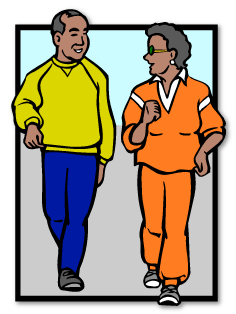
Communication - Communicating and Pain Behaviour
The information in this section fits most situations, but what you are going
through may be different. If the doctor or nurse tells you to do something else,
please follow what they say.
If you think there may be a medical emergency, go to your nearest hospital
Emergency Room.
Click on the phone icon at the bottom left of the page to access other helpful
phone numbers.
When people have chronic pain it often affects the way that they interact with
people around them. They often feel that it is difficult to talk about their pain
because they feel that others either don’t understand what it’s like to have
chronic pain, or they don’t believe something that they don’t understand.
This chapter discuses
• Effective communication strategies
• Ideas to help people reduce ‘pain behaviours’ and way to communicate
their feelings and needs

Goals

Learn


Read
Do
About what your behaviour is and telling others about your pain
How to express yourself about your pain
The exercises, listen to, and watch the videos for this chapter

Goal
Be able to see what your actions are and telling other when you are in pain
PACE - Picking a Problem
-
Introduction

It is time to do some detective work and pick a problem that you would like to work on. This is the first step of PACE!
The information in this section fits most situations, but what you are going through may be different. If the doctor or nurse tells you to do something else, please follow what they say. If you think there may be a medical emergency, please click on the help phone icon on the bottom left corner of the site.





I can never remember half of what the care team tells me during my appointments
How do I explain things to my friends, my boss, my kids…
• As much as I tell people how much pain I am feeling, they still don’t seem to understand what I am going through
My husband gets upset with me because he thinks that I exaggerate how bad my pain really is

What should I tell people who keep telling me about alternative pain cures?
-
Describing your pain
Even though you may speak the same language as your doctor, you might find it difficult to search for the words that best describe your pain. Or you might have difficulties expressing how bad your pain is. You may even have trouble understanding what your doctor is telling you.
Being able to explain what you are going through or asking questions when things are not clear is very important when working with a health care team.
It can be hard to find words that describe your pain. There are many
words you can use such as burning, squeezing, sharp, dull, numb,
stabbing, aching, or throbbing.It also helps to take notice of things that make your pain worse or
better.This information can help your doctor better understand your pain and
decide on the best treatment options for you.
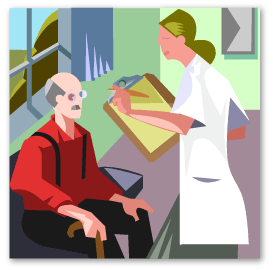
-
Introduction to pain behaviour
In this chapter you will learn about things you do when you are in pain and what they tell other people about ourselves and what we are feeling. We call these things that we do behaviours.
Behaviour is a bit of a strange word
• We often associate it with bad behaviour and discipline
• Behaviour is any action that we do.
We will focus on behaviour as something that communicates information.
• The ways in which other people respond to us is not always within our control. Different people can have different interpretations of certain behaviours. They may think it means something completely different than what you think it does
How do others respond to you when you behave in certain ways?
• You might notice that people try to avoid making comments about
your disability or even avoid making eye contact• Maybe you notice that people try to change the subject when you
start talking about your painHow does this make you feel?
• Many people have often said that they may feel anger, depression, avoidance, or guilt when people react negatively to their pain behaviour
• It’s important to work towards having others interested in all of the other aspects of our lives and not just the pain
• This is not denying that you have pain, but you are working toward taking control over your pain
Taking the focus away from pain
It is important to work towards having others interested in all aspects of
our lives, and not just the painThis is not denying that you have pain, but you are working toward
taking control of your pain!How do you communicate pain?
Verbal or non-verbal communication: using words or gestures
Direct pain behaviour: facial expressions, holding on to something when standing, bracing when walking, groaning, changing your voice and speech, etc
Medical behaviours: going for various types of scans, taking pills in public, wearing a tensor bandage. These all tell people that there’s a problem
Activities you no longer do: you stopped playing a sport, reading, or going to work. These all communicate disability



-
Types of behaviour
Pain behaviour means anything that we do which tells other people
that we are in pain.This can be:
• Things we do, limping, or grimacing
• Things we use, walking sticks, or household aids
The next few pages will describe some different pain behaviours. They all affect you and the way that you feel, and they all communicate to other people about how they should act around you.
Direct Behaviour
This behaviour is the way you directly express your pain. It includes telling others about your pain, having a certain expression on your face, making pain-related sounds, or limping.
Activity Behaviour
You might change the way you behave by doing less or more of certain activities in order to communicate the way you feel. We will talk more about this later, but here we concentrate on what messages people get when you change your activities. What does it tell them about you when you have to lie down more, or when you do not go out as much as you used to?
Medical Behaviour
Here is where we often feel that we have to communicate that we are ill to doctors. We ask for more x-rays, we try new pills, but we are often disappointed, or depressed when they fail to help

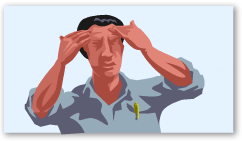



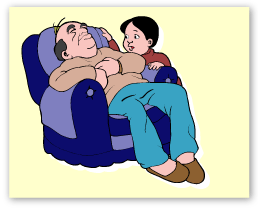
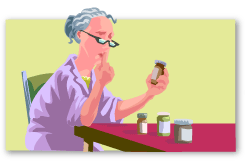
-
Acute vs Chronic pain
Note: Not all pain behaviours are bad. Some of them are useful; they let people know that we are not feeling well so they treat us in ways that helps us to recover.
• Pain behaviour is a very useful thing when are in ACUTE (short-lived) pain, as it can help us recover
• Think what happens when we have an accident. If you were to accidentally hit your finger with a hammer, and you shouted out in pain, and leaned over holding your finger, then people would show concern and sympathy, offer to look at it, and take care of it, and generally be nice to you
• This pain behaviour communicates to people that they need to treat you in a certain way. We generally like being treated this way and it means that you can get better more quickly
What happens when you have had the same pain for a long time? When the pain is CHRONIC?
After having pain for a long time, some people feel like others see them as a ‘pain person’. They may treat you as someone who needs sympathy, or they may be tired of fiving you sympathy. Sometimes people may not know how to respond to someone who has chronic pain.
Many people with pain tell us that they feel as if people see the walking stick before they see the person. You may feel that people are blaming or judging you when you have been ill for a long time.
Here are 2 videos to help you learn more about acute and chronic pain behaviours.
Remember that behaviour is a form of communication.
When you display pain behaviours people will try to make sense of it.
They may do this without understanding how you are feeling. Or they
may simply not know how to respond.
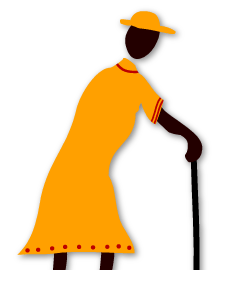

-
Other people
You may need to help other people understand the way you are changing. Remember that they are used to you behaving in a certain way. If you start to change they will want to know why. You will have to help them understand why you want to change.
Start looking at how you behave around others and how others behave around you, and then watch how this makes you feel. This will help you learn what you can do to change it.
Click on the video to learn more about communicating with other people.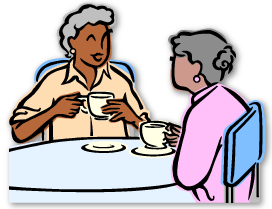

-
Building a support network
Most people need help and support from family and friends when they
are going through tough times. This is particularly true during the times
when pain is at its worst.It is very important to remember that in order to be best able to deal
with pain; it is helpful to have a good support network. A support network
is a group of people who help and encourage you in any way they can.It can be helpful to have people in your support group who are going
through a similar experience to what you are going through. This way
they may be better able to understand the exact experiences you are living through.Here are some questions to think about when you begin building your support network
• Who would you like to get help from?
• Who should be given specific information about diagnosis and treatment?
• What is the easiest way to get information to these people?
• Who should not be given specific information
• What kind of information eels right to share with which people?
Examples of people recognizing the important of a support network
Philip: From the day I was diagnosed, I’ve had a lot of support from family and friends. I look back at some harder times I went through and realize how comforting the love and support was, and still is today.
Joyce: Shortly after my accident, my next door neighbor came by with a freshly baked apple pie and a book to help keep my mind occupied. Once a week her husband would come by and mow my lawn. Her kids would also take my dog for a walk for me because they knew I couldn’t do it. Their kind gestures helped me a great deal during hard times and they will never be forgotten.
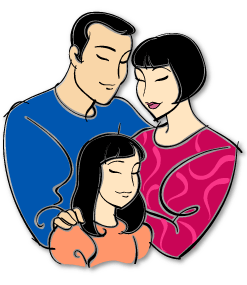

-
Myths and facts
There are many common thoughts on pain communication and behaviour and it is not easy to know which ones are true and which ones are false. You may have heard certain things about pain communication and behaviour or maybe you are experiencing your own difficulties. Relying on false information can be serious and may lead to future problems.
Please click on the icon below to access a list of common thoughts on pain communication.

-
Statistics
Take a look at the following statistic findings on communication. You might be surprised!
Did you know?
Body language is the oldest language
People are always communicating, and non-verbal communication is always revealed in the eyes
People only remember half of what they hear, even moments after they’ve heard it
In a conversation: 7% of the message is verbally communicated. While 93% is non-verbally transmitted
-
Example
Julie picks a problem to work on
When my pain gets bad, people ignore me when I try to communicate that
I am in pain, and I would like more support from them. They think that I
am just trying to get more attention when I moan with pain or even when
I tell them straight out: “You have no idea what I am going through with
this back pain! I wish this would go away. What did I do to deserve this? Life is so unfair...”. It doesn’t matter how many times I say it, they just don’t respond. I am running out of ways to communicate my pain to others because they just don’t seem to care.

-
Worksheet
PACE - Acting Upon the Problem
-
Introduction
Now that you have clarified what concerns you most, it’s time to decide what to do. Ready... set... action! In this section, the 2nd section of PACE, we will look at how to deal with tension by using relaxation.

-
Talking about chronic pain at work
Employers may need to know more information about your condition -
Especially if you need to have more flexible hours or time off. You may
find that many people don’t understand the impact chronic pain can
have on you. Your boss will appreciate getting this type of information
so you can both plan for the work you must do.You may decide not to share information with your co-workers. Your
health care information is confidential. You have the right to keep it
private, especially if you are worried about the type of support you
may receive.On the other hand, your co-workers may be very supportive friends.
Only you can decide how much and when to share medical
information with colleagues.Feel free to talk with health care staff about what types of
information others have shared with work and acquaintances.

-
Talking with friends and family
Dealing with their concerns
Diagnosis and treatments are not the only things that are overwhelming. Your
extended family and friends and their frequent calls and concerns can leave
you emotionally drained. Some family members and friends might have
negative thoughts and might say things like “Oh, this is horrible, how are you
going to go through this, you poor thing...?”. Other people’s comments may not
always be easy to deal with. It’s important to remember that when you need a
break, it’s okay to say ‘no’, and to not feel obligated to do things.“Just for now” explanations
• There may be some social events like a community book club
or regular dinners with certain relatives that you may not feel
you can keep attending• You may find yourself at places where people ask too many
questions or give too much advice• It’s okay to say that you won’t be coming “just for now”.
“Just-for-now” doesn’t hurt people’s feelings or leave them
wondering why you have stopped comingSmall communities
• Sometimes it can be very hard to keep secrets, especially in
small towns, because people usually know one another.• After you decide what type of information you most want to
keep to yourself, ask your closest friends to help you deal
with questions or remind others of what you really need.Dealing with their advice
Another form of help, that family and friends offer, is advice. Many
people have a need to fix or cure others. Like many people who have
chronic pain, the first need is to make things normal. Advice is given
with love and care but may not respect your needs. You have to find
your own way and make your own choices.
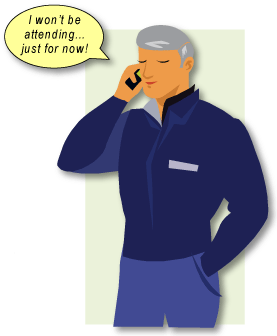
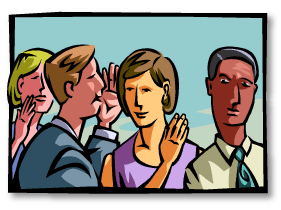
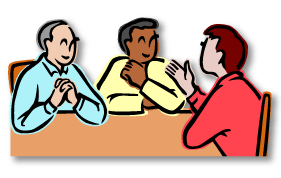
-
Talking to people about ways they can help
Family and friends may need ideas for ways they can help besides
giving advice. It is up to you to communicate this to them.Here are some ideas you may wish to suggest
• Spend time with your children
• Help with driving
• Contribute to making meals
• Assist you with house chores
Your friends and family will want to help, but they probably won’t know
how. They may do things that are not helpful, like suggesting ways for
you to cope with pain, or sharing stories about other people they know
who have chronic pain.Don’t be shy telling people what helps or what doesn’t. This is the only
way people will know what to do or what not to do.You may wish to give family and friends a list of things that they need to
help with. It may seem hard to ask for help, but this will help people know
how they can help you.Click here to access a worksheet that may help you notice your pain behaviour, identify what you did, and how others responded.
EXAMPLE
Click here to access a worksheet where you are asked to write down alternative pain behaviours. Notice people’s response to these and remember what worked best.
EXAMPLE
Good Communication: An example
What I Did
I closed my eyes with pain
What I Did
I asked my roommate to help me put the groceries away
Other's Responses
They turned away
Other's Responses
My roommate helped me and apologized for not noticing that I needed help
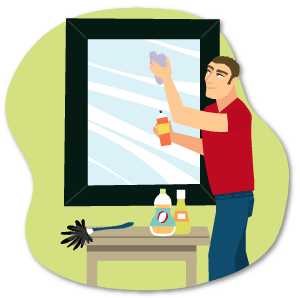

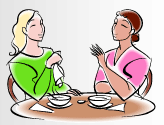


You know, Julia, these days I think I’ve been a little short with people. Please don’t take any offense to that, because it’s not personal, I’m just not getting much sleep lately, because of my back pain. Please bear with me!
I’m glad you told me, because I was starting to think that I had done something wrong
-
Advantages and disadvantages of pain and non-pain behaviour
HIDING PAIN BEHAVIOUR
Click on the icon below to access an exercise worksheet on taking notes of the advantages and disadvantages of pain and non-pain behaviour.
Advantages
• People behave towards you as if you are normal so you feel more normal
• You don’t stick out from the crowd and people enjoy your company
SHOW PAIN BEHAVIOURAdvantages
• You get more sympathy and concessions.
• People don’t expect you to do so much.
Disadvantages
• It can be tiring
• You may feel as if you are carrying the burden of the pain alone - not getting sympathy because you are not asking for it
Disadvantages
• It becomes a customary habit, even when the pain is less bad
• You may notice that people avoid you when behaving this way, as they would get the impression that you are too ill to participate in their activities
• Most people with chronic pain say that they don’t actually want sympathy, they want understanding.

-
Observing others
Here are some behaviour responses that are unhelpful in the long run.
If you are always displaying pain behaviours, people may get fed up or start
ignoring you. This can be frustrating. You may feel like you’re not being
understoodIf people often insist that you do less, or are over-protective of you, this can
communicate that they feel you are not independent. You may start to lack
confidence in yourself and become more and more dependent on othersThink of ways that people in your life behave towards you. Is this
what you want?How do you want people to behave?
How can you manage this?
The key in COMMUNICATION. Not passive or aggressive but assertive communication (being able to honestly express your opinions, feelings, attitudes, and rights).
Try to think about the differences between assertive, passive, and aggressive communication. Assertiveness can be difficult at first, especially for people who are not used to communicating their needs this way.
Click on the icon below to access a worksheet that might help you keep track of your pain behaviour in your everyday life.
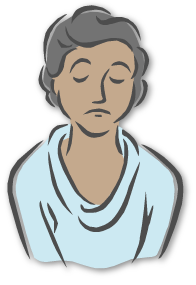


-
When people don't understand
When people don’t understand what you’re saying, it can get really
frustrating.• Sometimes it doesn’t seem to matter how many times you say
something, they just don’t get it• Sometimes we are surprised by the way someone responds to
us. We didn’t know they felt that way or so strongly• This can be a tremendous source of stress and anxiety which, as
you know, is directly related to your experience of pain
Click on the video to learn more about communicating.We talked about what can make it hard to tell someone what you need from them, or what you want. You might have thought like the following:
• I’m not entitled
• I’m not clear about my own feelings or thoughts
• If I’m clear, they’ll think I’m being aggressive
• When I try, things just get worse
• I feel too guilty
• What’s the point in trying?
• They will never understand anyway
Look at the following list for different ways of challenging your thoughts
• It’s okay to have a different opinion
• If I express my needs, then people won’t make assumptions
about me• Saying ‘no’ can increase my self-respect and self-confidence
• I can share positive as well as negative reactions
• Perhaps when I understand they will understand
I won’t feel so guilty if I take turns and listen to the other person as well as saying what I want to say
I can be clear, for example
• “There are things I can do, things I can’t do, and things that I
need time to do at my own pace”• “I have goals. There are things we can do together to help me
achieve them”• Let’s make a list and decide on the things we can do together
and the things that are up to me”We also talked about what people can do that seems to help conversations go well. These are some of the things we discussed.
• Be clear
• Give yourself time to answer
• Don’t mind-read
• Be patient
• Ask questions
• Listen
• Check to see if I got it right
• Make good eye contact
• Reward yourself


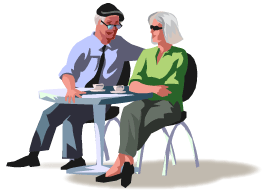

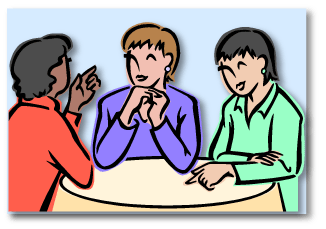
-
Pace yourself
Communication is a skill that needs to be developed and needs practice. Plan, rehearse, experiment, and reward yourself for trying.
An attempt that doesn’t go as planned is not the end of all opportunities. Look what happens when things didn’t go well – what could you do differently to improve the situation?

-
Example
Julie takes action
I realize that the reason why people in my life don’t react to my pain is not
because they don’t care, but that I might not express myself in a way that
is inviting for their support. I plan on working on my communication skills.
I will try to notice the effect of my behaviour and how others respond to it.

-
Worksheets
PACE - Challenges You May Face
-
Introduction
Even with the greatest plans we can sometimes come across obstacles. Before moving on with a plan, it is important to look at some of the challenges you may be facing. This brings us to the 3rd section of PACE.
The next pages describe some common doubts that other people with chronic pain have shared with us in regards to communicating.

-
My friends just don't understand
Friends, family, and community members may not understand the
effects that chronic pain or the medications you are taking have on
your sleep, feelings, and behaviours. Let them know what you are
going through. This may help them understand why you cannot
always take part in their activities.If you are feeling too tired to go out with your friends, you might
want to consider doing activities with them earlier in the day and
maybe keeping the visiting time shorter. That way, you are not
neglecting your social life while respecting your physical limits.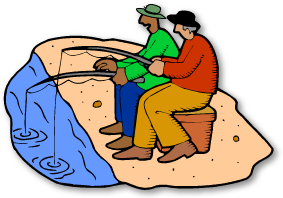
-
I may seem weak and dependent
Be selective when choosing who to talk to about your pain condition. You may only want to talk to your spouse and closest friend about this.
If you don’t feel comfortable talking to others about your pain or
condition, there is no need to tell them everything about it. You
may only choose to say that you are not feeling well, without giving
too much detail about your pain condition.It’s great to feel independent, but when you need help there is no
shame in expressing it.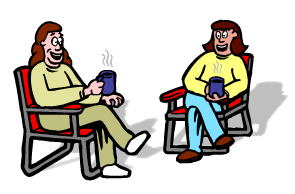
-
Example
Challenges Julie faces with her plan
As much as I try to improve my communication skills, somehow my
behaviour is still pushing people away. I feel that I’m often misunderstood.
When I’m in pain, my husband leaves the house and my kids go in their
rooms instead of helping me out. They think that I am angry, so they
don’t want to be around me, and leave just when I need them most. I am
running out of ways to get their help because what seems obvious to me
is unclear to them.Julie gets more help
I talked to my coach on how I feel misunderstood when I’m in pain. I was
advised to ask for help directly instead of hoping for others to understand
indirect hints. For example, when I feel pain and need help with chores
around the house, instead of moaning and accusing my husband of not
understanding what I am going through or get upset at how unfair life is,
I simply tell him what I have a bad headache and that I need his help. This way he would know why I am feeling tense, not because I’m mad at him, but that I am not feeling well and need help.By directly asking for help when I need it, people around me won’t need to guess what’s going on with me and that will reduce misunderstandings and frustrations.




-
Worksheets
PACE - Evaluating Your Plan
-
How did your plan work?
This brings us to the final step of PACE, evaluating your plan.
Just like using a scale, weigh out how successful the plan was in dealing with the problem you chose to work on.
Now that you have done most of the reading on communicating with others, have
noticed and written down your behaviour and other people’s responses to these,
look back at your plan and evaluate if it worked. Do you see some improvement?
It’s important to look at the things that did work and to remember not to try to fix
everything all at once. Some things may take a little longer to work on than others.
Click on the video to learn more on how to evaluate your plan.


-
How will you know if you need to modify your plan?
Try for a week or two and track how well your plan is working. At the end of every day, write down what is working and what isn’t.
Reward yourself for profess as often as you can. Remember that changing behaviours, especially when you are in pain and feeling tired and stressed can be hard. If you persist you will see positive results!
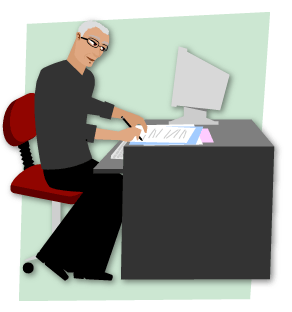
-
Different ways of keeping up with your plan in your everyday life
Good job for getting this far! Now that you have done all the steps
necessary to work on the problem you picked to work on, it is important
to find ways of applying them in everyday life.Asking your support network, like your friends and family, to help
motivate you with your plan is also a great idea.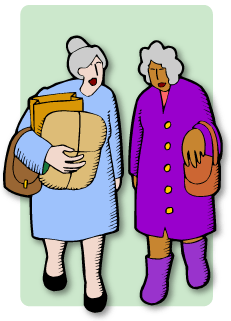
-
Example
Julie evaluates her plan
I’m glad I spoke to my coach about this. I used the advice I was given, to
directly ask for help when I need it and not expect people to read my
mind. This is working well for me. I feel like I’m better understood when
I communicate directly like that. I do need to work on this, because I
have a tendency to hold back and not communicate what I want or what
I need.

-
Worksheet
-
Example 2
How Julie will stay on track
In order to successfully communicate directly what I want and need I will
need to practice doing so as often as I can. I need to break out of my old
habit of expecting others to read my mind. I plan on practicing my new
communication skills regularly so that it becomes automatic.

-
Worksheet
Checklist
Clicking on the icon below will link you to a CHECKLIST of situations you may be going through; it also allows you to express some of your difficulties or concerns.
Click on the icon to access the checklist

Resources
If you are interested in learning more about this subject, please consult the following reference. If you need help finding this resource you can ask any member of your psychosocial team.
Check out the website below for more information on the following subject
Assertive communication
Conclusion
Congratulations! You are done this chapter. By finishing this chapter and completing all the worksheets you have learned many skills. We hope that you have solved your problem using PACE and learned many new ways to tackle problems that you may have in the future. You have put in a lot of work in this chapter so give yourself a pat on the back.
In this chapter you have read about:
• Different ways of communicating with others about pain.
• The way we behave is a form of communication.
• Communication is not only done with words.
• The importance of noticing people’s response to our behaviour.
Clicking the Next button will bring you to the table of contents for the chapter about Setbacks, or you can choose a different chapter from the menu on the left.

Introduction
Goals
P - Picking a Problem
A - Acting Upon the Problem
C - Challenges You May Face
E - Evaluating Your Plan
Checklist
Resources
Conclusion
Glossary
Communication








